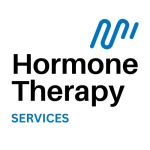Testosterone Therapy

Hypogonadism is a condition in which the body fails to make enough hormones because of a problem with the testicles, pituitary gland, or brain.
Men use testosterone products to help with fatigue, erectile dysfunction, and loss of sex drive. A number of prescription testosterone products are available to treat hypogonadism. Testosterone products come in different forms, including gels, injectable solutions, patches, pills, and pellets implanted under the skin.
Once a patient starts testosterone therapy, they usually undergo lifelong treatment which means that doctors will monitor the patient’s hormone levels every six months to a year. Depending on the patient, the checkups may be more frequent.
Subtle Symptoms of Low Testosterone
The symptoms of low testosterone are sometimes obvious, but they also can be subtle. Testosterone levels decline naturally in men as they age over the decades. But certain conditions can also lead to an abnormally low level. Symptoms of low testosterone include:
- low sex drive (libido);
- erectile dysfunction;
- fatigue and poor energy level;
- decreased muscle mass;
- body and facial hair loss;
- difficulty concentrating;
- depression;
- irritability;
- low sense of well-being.
If men have symptoms of low testosterone and tests show they have an abnormally low testosterone level, a doctor may suggest treatment. For millions of men who have low testosterone levels but no symptoms, no treatment is currently recommended.
Types of Testosterone Products
Testosterone can be administered in a skin patch, skin gel, pill, or cream form — or as an injection, a solution applied to the armpit or a patch, or a buccal system applied to the upper gum or inner cheek.
While many testosterone products are available only with a prescription, some drug stores and health food stores sell them over the counter. A few of these products also claim to be all-natural.
Gels (Androgel and Testim)
Testosterone gel is a prescription medication applied directly to a man’s skin — on the shoulders and upper arms and/or abdomen, depending on the brand. Testosterone gel can inadvertently transfer from your body to others and can lead to serious health reactions.

To avoid such contact, apply testosterone gel to clean, dry, intact skin that will be covered by clothing. Wash your hands right away with soap and water after applying. Once the gel has dried, cover the area with clothing and keep it covered until you have washed the area well or have showered.
Injections (Depo-Testosterone)
First approved in 1979, Depo-Testosterone is one of the older drugs of its kind on the market. It’s a liquid and is designed for injection deep into the gluteal muscle. The active ingredient, testosterone cypionate, is a white or creamy white powder mixed with other ingredients to make a solution. The drug is available in two strengths, 100 mg, and 200 mg.
Patches (Androderm)
Testosterone transdermal patches, including Androderm, come as patches to apply to the skin. Patches work best when applied around the same time each night and are left in place for 24 hours. Testosterone patches are meant to be worn at all times until replaced with new patches. Androderm patches should be changed every 24 hours. The old patch should be removed before applying the new one. You should apply the patches to different spots each night and wait at least seven days before re-using a spot.
Capsules (Methyltestosterone and Android)
The testosterone capsules Methyltestosterone and Android have been discontinued but have been used in men and boys to treat conditions caused by lack of the hormone, such as delayed puberty, and in women to treat breast cancer that has spread to other parts of the body.
Methyltestosterone is a man-made form of testosterone. It can affect bone growth in boys who are treated for delayed puberty.
Boosters (Testofen)
Manufacturers of testosterone boosters like Testofen have touted their products as means to increase muscle mass, strength, and sex drive in men. Among the most popular testosterone boosters are products that contain some combination of Tribulus Terrestris, DHEA, zinc, and d-aspartic acid. These ingredients have been associated with a number of side effects, including aggressiveness, breast enlargement, cholesterol changes, prostate problems, and an increased risk of cardiovascular disease.
Types of testosterone to be replaced
Doctors analyze testosterone levels in two categories: total testosterone and free testosterone. Most testosterone is attached to a protein called sex hormone-binding globulin (SHGB). A small amount of testosterone is free, and a small amount regularly attaches and detaches itself from a protein called albumin. Any testosterone that is not attached to SHGB is considered free testosterone.
Benefits of Testosterone Therapy
What can you expect from testosterone treatment? It’s impossible to predict because every man is different. Many men report improvement in energy level, sex drive, and quality of erections.
Testosterone also increases bone density, muscle mass, and insulin sensitivity in some men.
Men also often report an improvement in mood from testosterone replacement. Whether these effects are barely noticeable, or a major boost, is highly individualized.
Critics and Risks
As the use of testosterone therapy has increased so has the amount of concern surrounding these products.
Some doctors say that in reality, few men are actually diagnosed with clinical hypogonadism and that many “symptoms” are just a normal part of aging. If a man is healthy, he should think twice before taking the therapy without proper indications.
Over the years, men have sued the makers of testosterone products after using the therapies and suffering from heart attacks, strokes, and blood clots because such risks may appear in men with specific contraindications for the therapy which hadn’t been diagnosed properly before they started the treatment.
To avoid such risks, you should undergo a complete diagnostics and lab evaluation to learn if the therapy is really indicated and you are allowed to receive it.
For any concerns don’t hesitate to consult our qualified specialist for free.
GET A FREE CONSULTATION TODAY
FREQUENTLY ASKED QUESTIONS
Finding an HGH therapist might prove to be challenging, especially now that there are quite a number of them who offer similar services. However, if you want to find the best therapist, you will need to do your research by considering factors such as credibility, licensing, professionalism, and experience to mention a few.
There are various ways you can boost the levels of HGH in the body, namely HGH injections, HGH releasing peptides, and even natural ways. Some of the natural ways include exercising, getting enough sleep, reducing stress, a healthy diet, and intermittent fasting. HGH injections, on the other hand, is whereby the growth hormones are directly administered into the body and gets absorbed into the bloodstream directly. Lastly, peptide injections stimulate the pituitary glands to produce the growth hormone naturally.
When it comes to the HGH therapy treatments, it is best to first consult your doctor in order to know the exact dosage you should be taking on a daily. Remember, our bodies are different, and self-medicating yourself might lead to either an overdose or an under dose; both of which are harmful.
In healthy men, testosterone levels between 350 ng/dL and 1000 ng/dL are referred to as “normal.” Normal physiology allows the brain and the testes to work together to keep testosterone in this range. The brain produces “signal” hormones that are responsible for stimulating testosterone production. These signals are periodically released, which in turn stimulates testosterone production. When levels of testosterone are in an acceptable range, the production of the signal hormones are slowed, which in turn allows the testosterone levels to decrease.
Hypogonadism, in a male, refers to a decrease in either testosterone production, sperm production, or both. The medical professionals at Low T Center address the testosterone aspect of this condition. Decreased sperm production requires a careful, thorough evaluation by a fellowship-trained specialist.
Benefits of testosterone replacement therapy vary based upon the pre-therapy symptoms and other factors, but they can include the following: increased energy; decreased irritability and depression; improved muscle mass and strength; improved sexual desire; improved visuospatial cognitive function and verbal memory; higher motivation; decreased body fat (optimal results received through accompaniment of a diligent diet and exercise regimen); possible improvement in erectile function; thicker skin.
